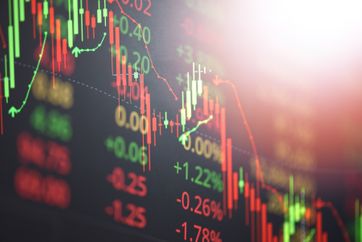Although the famed Santa Rally sputtered out, Q4 was a net positive for stocks and bonds after a dismal third quarter. The story of a hawkish Fed, high inflation, and a strong labor market remained. As we enter the new year, there is growing discussion on if the economy might enter a recession as many leading indicators have turned negative. So far, business earnings and the consumer have been holding up, however the lag effect in monetary policy could begin to work itself through the economy.

Q4 2022 Market Commentary
Domestic Equities
Domestic equities performance was strong out of the gates as we entered the fourth quarter at deeply oversold levels. Hopes for a softer landing and Fed pivot grew and stocks continued to rally through November, before selling off in December.
The Fed continued their battle with inflation and increased the Fed Funds rate 1.25% during the fourth quarter to a range of 4.25%-4.5%. A bright spot for doves was the Fed’s final rate hike was pared back to 0.5% after four consecutive 0.75% hikes. Inflation remained elevated at 7.1%, however there are encouraging signs that it is tempering. The labor market remains stubbornly strong for the Fed as unemployment actually edged down in the last report to 3.5%.
Overall, the fourth quarter showed the Fed is still between a rock and a hard place. Powell started to inch back from being extremely hawkish, and markets began to turn from pricing in policy risk to growth risk. Markets are grappling with the idea that the enormous amount of Fed tightening could be contributing to a large slowdown in the economy and began to embed worries that earnings estimates would begin to be cut. The positive is that inflation might finally be coming down, yet the reasons might be due to a much less robust economy. Uncertainty is still extremely high and until that subsides, volatility will remain elevated with large rallies and sell-offs dominating headlines.
Value outperformed growth this quarter, closing the year with the largest margin since the early 2000s. At the index level, the tech-heavy Nasdaq fell -0.79%, the S&P 500 rose 7.56%, while the price weighted Dow Jones Industrial Average rose 16.01%. Beneath the surface, Energy (+22.8%), Industrials (+19.2%) and Materials (+15.0%) outperformed. Consumer Discretionary (-9.1%) was the only sector in the red.
Foreign Equities
Foreign markets outperformed their US counterparts as the MSCI ACWI ex US advanced 14.4%.
Eurozone
The region outperformed as economically sensitive areas took the driver’s seat, leaving defensive areas like staples in the dust. Like the US, markets rallied on hopes that inflation is peaking in the eurozone as the last read came in at 10.1% compared to 10.6%. The European Central Bank is mirroring the Fed in terms of pace as they also slowed down their rate hike to 0.5% after previous 0.75% hikes. However, President of the ECB, Christine Lagarde, reiterated that the central bank is not done with increases. Eurozone economic indicators are showing weakness. However, what did help the region in the quarter was the unusually mild winter which helped alleviate cost pressures.
UK
Across the pond, UK equities rose 17.2% after a volatile third quarter marked by political crisis. Many asset classes cheered the arrival of Rishi Sunak, who became the country’s new prime minister. Sunak was previously the country’s equivalent to the chief financial minister, and with his fiscally conservative reputation, this in turn helped quell bond yields and interest rates in the UK. Following along with the same theme as the Fed and ECB, the Bank of England also announced a reduction in the pace of interest rate hikes.
Emerging Markets
Emerging markets performed well in Q4, aided by a much weaker dollar. The outsized impact of China in the broader index was a large tailwind last quarter as the country began to finally relax covid zero policies. Markets cheered the move which caused China indexes to rise over 11%. Latin America markets outperformed broader index while Turkey was the strongest component as the central bank continued easing monetary policy. The MSCI Emerging Markets Index rose 9.9%.
Fixed Income
Treasuries
The US treasury market turned in a mixed performance in the last quarter of the year. Optimistic inflation data mid-quarter led to a decline in rates and a rally for the bond market. This optimism eventually eased as rhetoric from the Federal Reserve perceived as continuing their hawkish tone turned rates upward. Ultimately, we saw government yields tick up marginally for the quarter but still eked out gains for treasuries. The Bloomberg US Treasury 7-10 Year Index rose 1.3%.
Corporates
Corporate bonds performed strongly in Q4 as the risk picture for credit brightened. Credit spreads, which dictate a significant portion of performance in these instruments, tightened as investors priced in new information regarding future rates and the economic outlook. High-yield bonds outpaced the strong performance from higher quality bonds due to the outsized impact of improving spreads. The Bloomberg Corporate Bond Index gained 4.0% and the Bloomberg High Yield Index rose 4.2%
Global
Global bonds outperformed the domestic market primarily due to weakness in the US Dollar, which lost 8% in the quarter, adding onto the dynamics discussed previously. Emerging markets performed the best due to their extreme sensitivity to movements in the dollar. The Bloomberg Global Aggregate Ex-US returned 6.8% while the Bloomberg EM Ex-US Aggregate rose 10.7%.
Alternatives
A weak US dollar and a backup in yields combined to help the S&P GSCI Index gain 3% in Q4. Industrial metals provided a large tailwind for the S&P GSCI Index, led by copper and nickel. Within precious metals, Gold (+9.2%) and Silver (+26.3%) made a comeback. Palladium (-17.6%) was a large underperformer. Data indicating a global slowdown in economic activity continued and with it, Oil (-2%). Agricultural commodities were roughly flat over the quarter.
